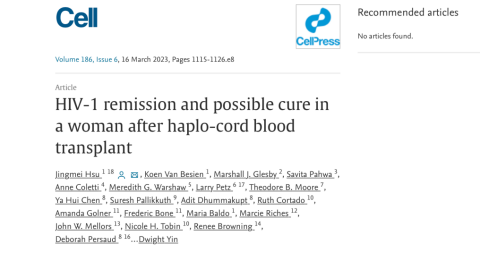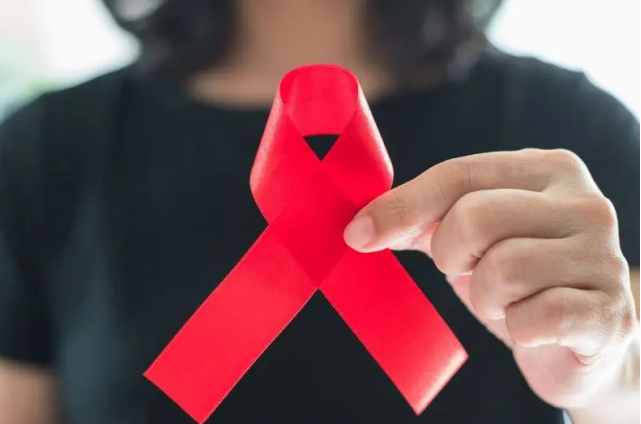Industry News
First woman in world to be possibly cured of HIV; is cord blood really that magical?

March 16, 2023 - Jingmei Hsu's team at Weill Cornell Medical College published a research paper online in Cell reporting that a female patient who received a CCR5Δ32/Δ32 haploidentical cord blood transplant for acute myeloid leukemia may have been cured of both leukemia and AIDS, becoming the first female HIV patient to be cured.

Photo of the Berlin patient
Previously, there were only two cases of complete HIV remission. In both cases, remission happened after transplanting bone marrow from donors with HIV-blocking mutation for the treatment of leukemia.
The first was a white male known as “the Berlin patient”, who died of cancer in 2020, more than a decade after his HIV remission.
The second was a Latino male known as “the London patient” who had no further detectable HIV in his body for 30 months.

What's so special about “the New York patient”?
Like the first two cases, “the New York patient” was diagnosed with acute myeloid leukemia (AML) in 2017. Before that, she had been receiving antiretroviral (ART) treatment for 4 years to contain the HIV in her body, which was going well, but the virus was still detectable.
Because “the New York patient” is a mixed-race woman, there was not much opportunity to seek a tissue match for the donor. Therefore, her physicians turned to umbilical cord blood, which, unlike most tissue transplants, does not require a perfect match between donor and host. However, it takes several weeks for the cord blood to stabilize and produce enough white blood cells to stop the infection.
To avoid this issue, the patient's medical team devised a two-pronged strategy. The patient received a blood transfusion from a matched related donor to provide her with a temporary defense, as well as an umbilical cord stem cell transplant that could slowly produce white blood cells.
How was she “cured” of HIV?
Coincidentally, the cord blood stem cell transplant she received contained a gene mutation in CCR5 that prevents the HIV virus from entering the cells.
And within three months after the transplant, the stem cells from the cord blood had been converted into leukocytes and myeloid cells in her body, which meant that she already possessed the genetic mutation of CCR5 and that HIV was no longer detectable in her body.
After this period, “the New York patient” stopped all antiretroviral therapy and had no detectable HIV activity left in her body. The HIV virus remained undetectable in the patient's body in the 14 months after treatment was stopped, meaning that the stem cell transplant has achieved long-term HIV remission.
Why Cord Blood
Researchers say umbilical cord blood stem cells hold great promise as a leukemia therapy compared to the more conventional blood stem cells from donors.
On one hand, the new therapy appears to reduce the relapse risk. More importantly, common side effects in bone marrow transplantation, such as graft-versus-host disease, are less likely to happen, and in this case the patient was discharged from hospital mere 17 days after treatment.

The most exciting part is that cord blood does not require a perfect immune match between host and donor.
The report confirms the possibility of an HIV cure and further strengthens the use of gene therapy as a viable strategy for curing HIV, the researchers said.
The study suggests that an important factor in success is the transplantation of anti-HIV cells. Previously, scientists believed that a common stem cell transplant side effect called graft-versus-host disease, in which the donor's immune system attacks the recipient's immune system, played a role in a possible cure.
Moreover, cord blood contains many types of stem cells including hematopoietic stem cells and mesenchymal stem cells (MSC), as well as other types of cells such as natural killer cells (NK cells) and lymphocytes, all of which are vital materials for immune cell therapies and stem cell therapies.
As stem cell transplantation continues to develop, we firmly believe that stem cells from umbilical cord blood can play an even greater role in treating HIV. More and more patients like “the New York patient” will benefit from stem cells and resume a healthy life.